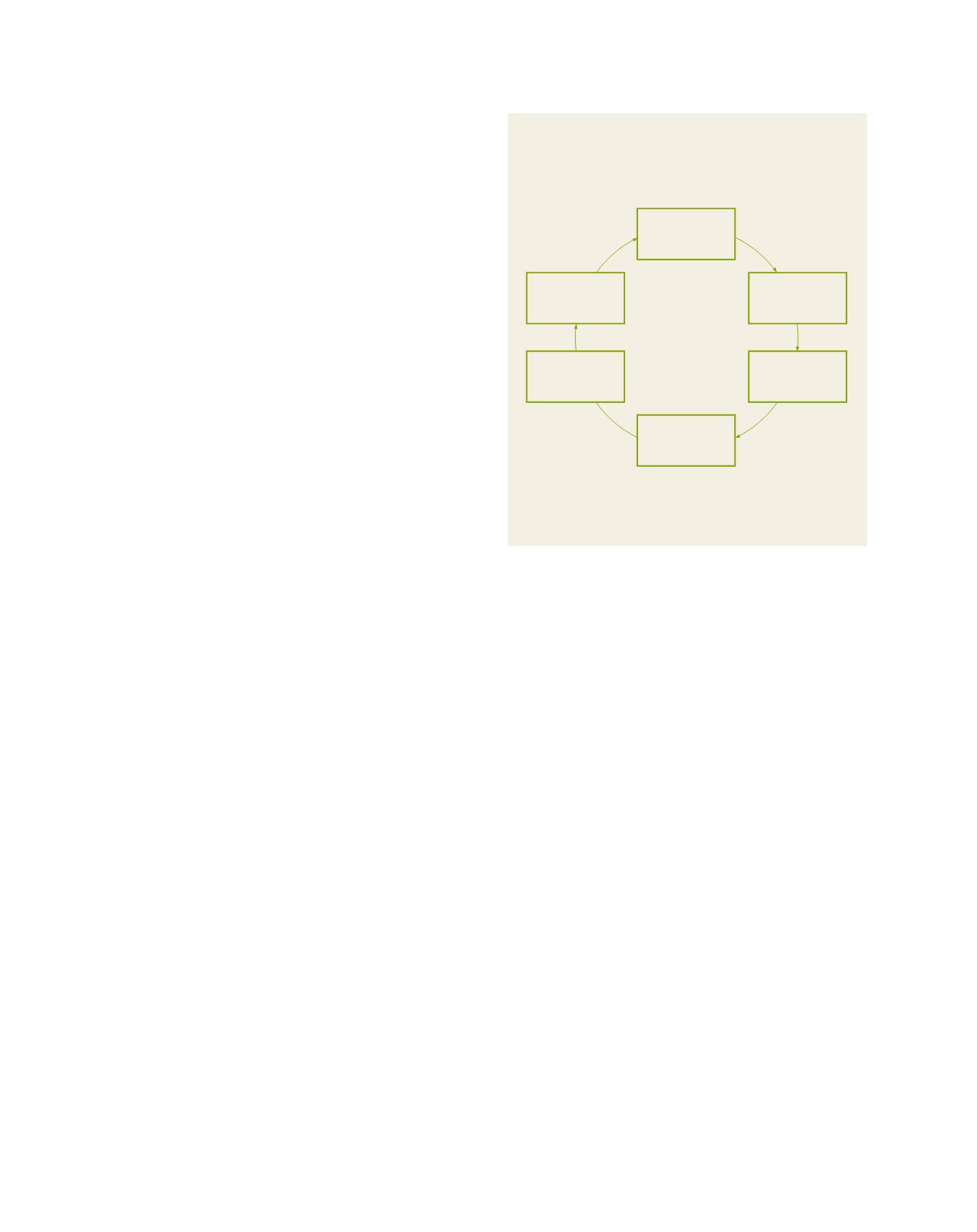

[
] 82
productive capacity and sustainable means of income for
the poor. In 2008 IDB and ISFD launched the Integrated
Microfinance Support Program to tackle the lack of access to
working capital within IDB member countries.
In 2010 IDB and ISFD engaged in a partnership with the
Government of Benin to assist the country in achieving its
poverty reduction goals to increase people’s access to microfi-
nance. This programme develops its products on the principles
of participatory Islamic microfinance, which has proven very
popular among the beneficiaries. There is strong demand for
more such products, and Islamic microfinance clearly has a
major role to play in Benin’s fight against poverty.
Benin suffers from high levels of poverty and illiteracy,
problems that leave youth and women with few opportuni-
ties to become economically active. It was ranked 165th out
of 187 countries in the 2015 Human Development Index,
1
but the country is striving to improve its standing through a
range of strategies.
The programme aims to increase employment opportunities,
boost economic activities and reduce poverty for 200,000 people
per year by improving their access to sustainable microfinance
services, market-oriented training and business opportunities.
The Integrated Microfinance Support Program targeted six main
groups: micro and small enterprises including new start-ups;
female heads of households; unemployed youth graduates or
those with professional diplomas; skilled labourers, traders and
craftspeople; deprived rural families; and the active handicapped.
It had six components; three related to programme manage-
ment and the following three, which guided its main activities:
• ‘Revolving microfinance schemes for ultra-poor people
and micro and small enterprises’ provided two lines of
microfinance: small loans for income-generation activities
for groups of ultra-poor people, of which at least 70 per
cent would be women; and larger loans for micro and
small enterprises, economically active poor people and
unemployed youth. Both used Islamic microfinance.
• ‘Capacity-building for microfinance institutions’ entailed
tailored training and support programmes, through
which national and private institutions were to benefit
from training to support the introduction of Islamic
microfinance principles, products and practices.
• The ‘Market-oriented vocational training and awareness
campaigns for ultra-poor people’ component was
undertaken by national partners. It comprised a pro-poor
vocational literacy and awareness programme, and practical
apprenticeship programmes.
The initial aim was that at least 70 per cent of the programme
beneficiaries should be women. But by 2015, 90 per cent of those
who benefited were women – about 150,000 in total. And the
benefits are not just financial; the women describe the pride,
unity, independence and happiness that have changed their lives
for the better since they were able to access working capital to
expand their activities.
One example is the Saint Trinité group. Located in the
heart of Contonou’s poor Yagbé quarter, its 250 members
include widows, disabled people and other very poor women.
Together, they mainly buy fish, which they then smoke or
fry for sale. Their president, Celestine Kounduho, explains
how their lives have changed: “We had never taken any
credit nor had access to markets before. We started with a
CFAF30,000 (US$60) loan. When we repaid this we were able
to borrow more, and now we are working with money from a
CFAF100,000 (US$200) loan. The group is growing and we
can reach out to others. We work and sell together, and now
have the money to buy materials so our children can go to
school, and extra moneys helps us at home.”
The programme’s first phase ended in June 2014, but the
revolving fund that was established continues to fund women’s
groups and small business ventures. By November 2015, around
150,000 ultra-poor women (those earning less than US$1.25 a
day) had benefitted from microfinance, as well as 15,000 men.
The programme has yielded many tangible benefits – and valu-
able experiences to build upon in the future.
IDB believes that an Islamic financial inclusion model can play
a very important role in promoting empowerment and gender
equality. Empowerment, as understood and promoted within the
context of development and poverty reduction, is a multidimen-
sional and interdependent process that encompasses dimensions
of social, economic and political empowerment. The rationale
behind this is that the creation of an enabling environment for
female entrepreneurship will tackle the underlying causes of
women’s and girls’ economic and social exclusion, constraints
of equitable opportunities and participation. This will increase
women’s and girls’ agency and they will have genuine access to
and control over economic resources, participate in the family
and community decision-making processes and have more power
to balance their roles and mobilize against or report violent inci-
dents. This in turn will respond to their strategic gender needs
and enhance their ability to participate in, contribute to and
benefit equitably from development.
The IDB Islamic Microfinance Facility approach
Viable business
opportunities
Promising
markets
Market orientated
entrepreneurship
skills
Strategic
partnership
Business
development
services and
support investment
Appropriate
participative
financial services
(i) Founding microfinance support on eliminating
main common livelihoods barriers of access to:
(ii) Considering the poor as a business partner not credit consumer
Source: IDB
A B
etter
W
orld
















